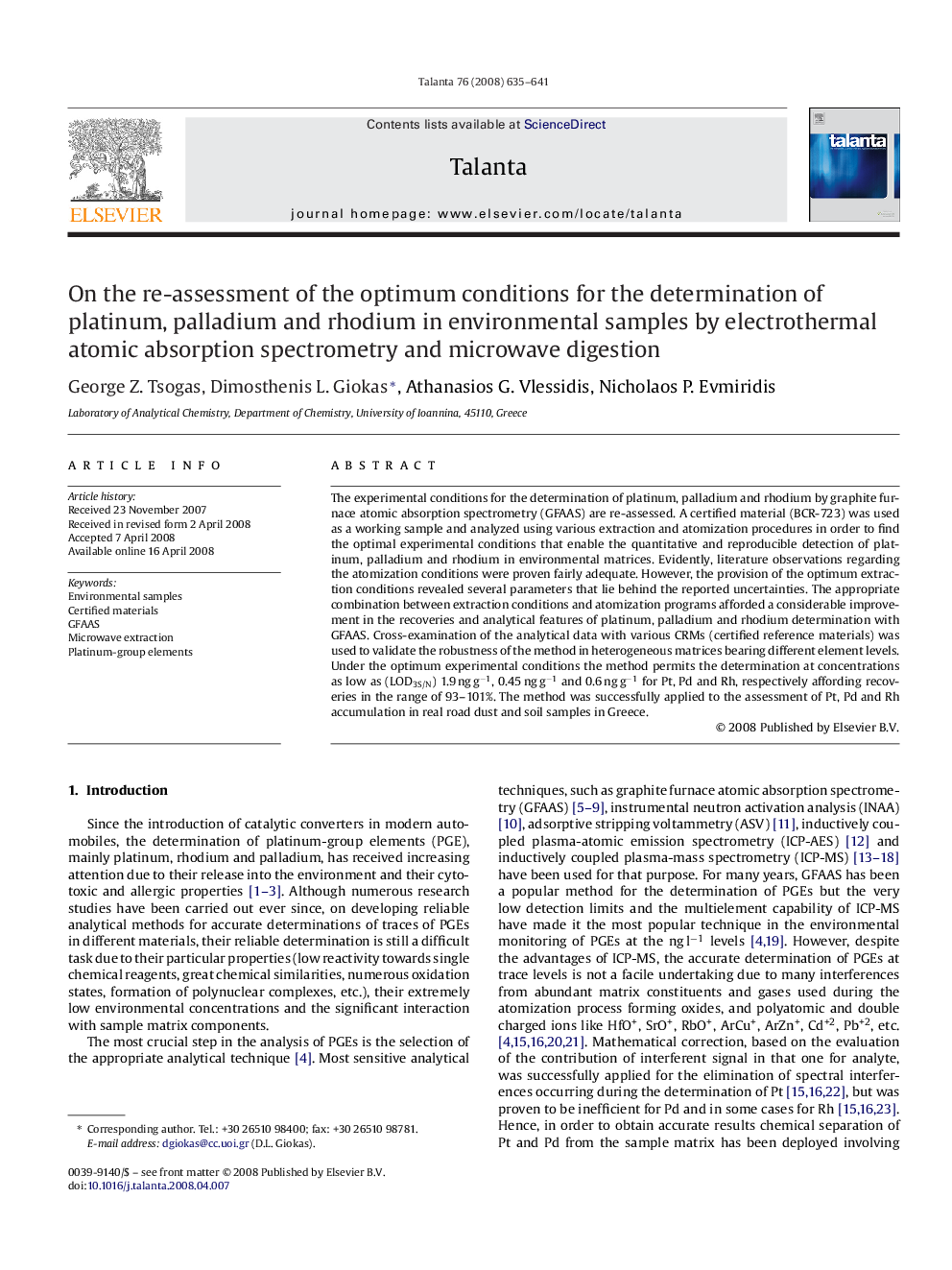| Article ID | Journal | Published Year | Pages | File Type |
|---|---|---|---|---|
| 1243535 | Talanta | 2008 | 7 Pages |
Abstract
The experimental conditions for the determination of platinum, palladium and rhodium by graphite furnace atomic absorption spectrometry (GFAAS) are re-assessed. A certified material (BCR-723) was used as a working sample and analyzed using various extraction and atomization procedures in order to find the optimal experimental conditions that enable the quantitative and reproducible detection of platinum, palladium and rhodium in environmental matrices. Evidently, literature observations regarding the atomization conditions were proven fairly adequate. However, the provision of the optimum extraction conditions revealed several parameters that lie behind the reported uncertainties. The appropriate combination between extraction conditions and atomization programs afforded a considerable improvement in the recoveries and analytical features of platinum, palladium and rhodium determination with GFAAS. Cross-examination of the analytical data with various CRMs (certified reference materials) was used to validate the robustness of the method in heterogeneous matrices bearing different element levels. Under the optimum experimental conditions the method permits the determination at concentrations as low as (LOD3S/N) 1.9 ng gâ1, 0.45 ng gâ1 and 0.6 ng gâ1 for Pt, Pd and Rh, respectively affording recoveries in the range of 93-101%. The method was successfully applied to the assessment of Pt, Pd and Rh accumulation in real road dust and soil samples in Greece.
Related Topics
Physical Sciences and Engineering
Chemistry
Analytical Chemistry
Authors
George Z. Tsogas, Dimosthenis L. Giokas, Athanasios G. Vlessidis, Nicholaos P. Evmiridis,
